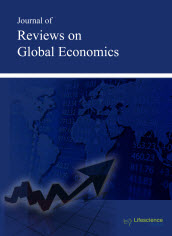jrge
Editors' Choice - A Comparative Analysis on Subsidy Policies of China’s Public Housing Programmes: Evidence Based on Micro Surveys in Baoji
|
|
Abstract: To understand the effects of the public housing programme and measure the feasibility of subsidy policies, this study conducts a comparative analysis on the wealth effects of two of the main subsidy policies which are the sell-oriented policy1 (SOP) and rent-oriented policy2 (ROP), implemented in the city of Baoji, China. The data in this study come from a survey conducted in 2010 in Baoji. We apply a Cobb-Douglas utility function to measure the extra benefits for households that fall under the SOP and households that fall under the ROP. Our results indicate that the low-income SOP households have a stronger taste in terms of housing consumption, and although both policies offer benefits to households, ROP households benefit more than SOP households do. The main policy conclusions drawn from our findings are that the ROP should be adopted first, and restricting resale by the purchasers is the key to achieve policy efficiency. Keywords: Public housing, Sell-oriented policy, Rent-oriented policy.Download Full Article |
Editors' Choice - Hayek’s Hidden Critique of The General Theory
|
|
Abstract: Hayek is seen as one of the main opponents of Keynes because of the debate about macroeconomics that they had in the early thirties. A few years after this controversy, Keynes published The General Theory ([1936] 1973), and Hayek was expected to criticize Keynes’ new model. But, surprisingly, Hayek decided to remain silent and let his opponent go unchallenged. He regretted it ever after. However, this paper argues that in Hayek’s work after 1936, there is a criticism of The General Theory that to a certain extent has remained unnoticed. Thus, this approach reopens the great debate between Hayek and Keynes just where they had apparently left it, that is, after the publication of The General Theory. Keywords: Keynes, prices, business cycles, macroeconomic policy, unemployment.Download Full Article |
Editors' Choice - Capital Theory, Crises, and Business Cycles: The Triangular Debate between Hayek, Keynes, and Sraffa
|
|
Abstract: The paper discusses aspects of the triangular debate between Hayek, Keynes, and Sraffa on economic crises, business cycles and the role of capital theory in an analysis of these phenomena. It is argued that Sraffa was both critical of Hayek's monetary overinvestment theory and Keynes's use of the concept of commodity rates of interest Sraffa had employed in his criticism of Hayek and of Keynes's theory of liquidity preference. Keywords: Business cycles, Capital theory, Crises, F.A. von Hayek, J.M. Keynes, P. Sraffa.Download Full Article |
Editor’s Choice : The Phillips Curve in the United States and Canada: A GARCH-DCC Analysis
|
|
Abstract: By applying the GARCH-DCC model, we reexamine the Phillips curve based on a time-varying correlation analysis for Canada and the United States from January 1985 to December 2012. The empirical results show that the sign of the correlation between the inflation rate and the unemployment rate is negative during recession periods but positive during boom periods. Keywords: GARCH-DCC model, Phillips curve, financial crisis.Download Full Article |























